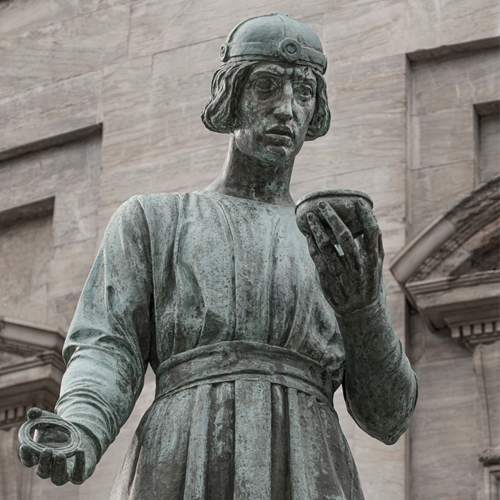
January 19
Canute was the son of King Sven II Estridson of Denmark. He succeeded his brother Haraldo III Hen in 1081. At that time, he was almost 40 years old. Little did he know, his life and his reign would end in less than six years. But in that time, he built a reputation for holiness, based on his support for the Church. He built many churches and monasteries in Denmark. However, he angered his own people by insisting that they pay tithes (10 percent of their income) to the Church. These tithes paid for the churches, monasteries, and hospitals he was building. However, those who were already having a hard time supporting their families and putting food on the table resented the enforcement of the tithe.
In 1085, he planned to invade England and to become king of that land. But his own nobles rebelled against him and forced him to flee to the island of Funen. In July of 1086, he, his brother Benedict, and seventeen companions were killed in Odense, Denmark. Because of his advocacy of the Church, his death was considered martyrdom. Canute was considered a saint. He is the first Dane to be canonized.
His wife, Queen Adela of Flanders, had planned to move his body to Flanders. But when a bright light shone around St. Alban’s Church, she decided to leave his body where it was. People streamed to the church to ask Canute’s intercession, and miracles of healing followed. The life of Saint Canute recalls a time in history when the Church and the state were interrelated. This has good points and bad points. King Canute collected money for the Church, but he also had the power to direct how the money was used. Sometimes religion and the state cooperate in good causes, but they operate separately.
(Image © Stig Alenas, via Shutterstock)